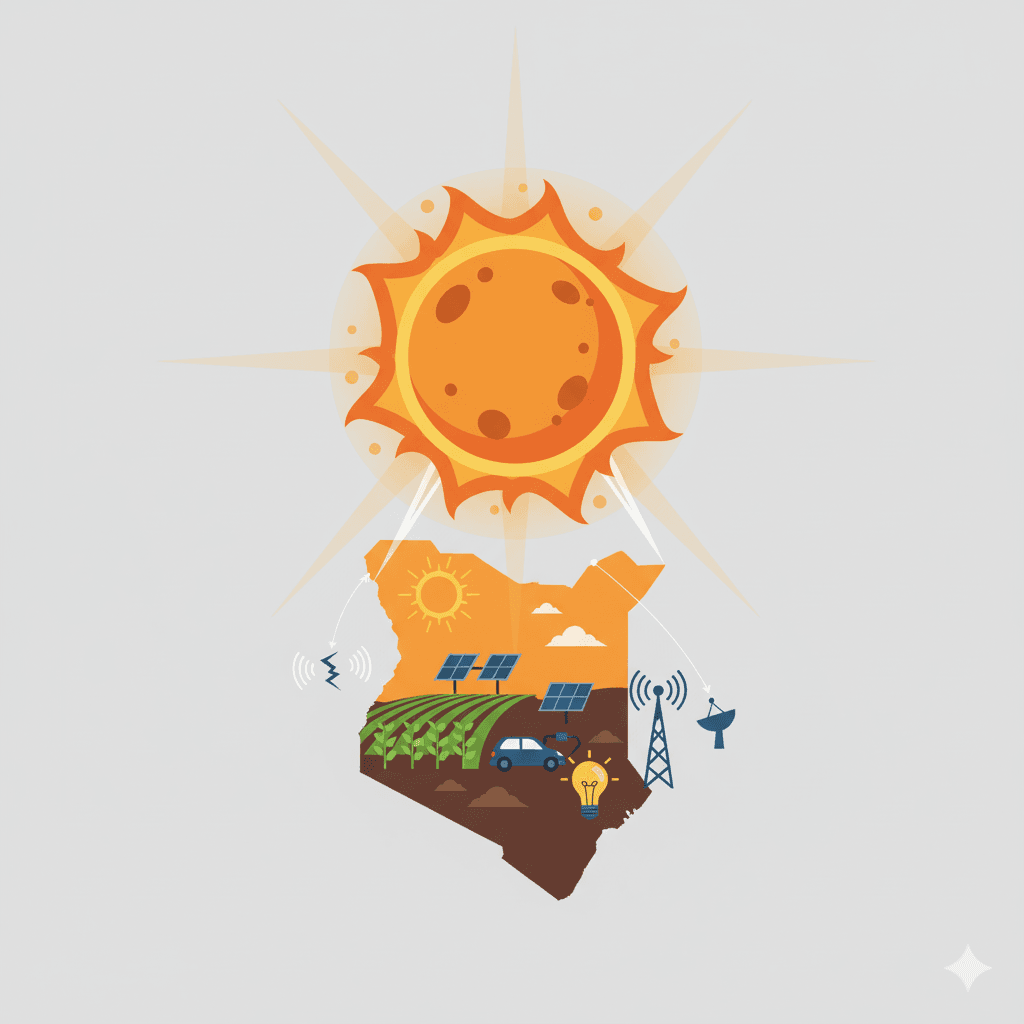Loading News Article...
We're loading the full news article for you. This includes the article content, images, author information, and related articles.
We're loading the full news article for you. This includes the article content, images, author information, and related articles.
As the sun reaches its peak activity in an 11-year cycle, Kenya faces increased risks of disruption to critical satellite, aviation, and power grid infrastructure, alongside a heightened, albeit slim, chance of witnessing auroral displays.

The sun has officially entered its most active phase, known as solar maximum, a period within its roughly 11-year cycle characterized by a surge in solar flares and coronal mass ejections (CMEs). This peak in activity, which scientific bodies like NASA and the U.S. National Oceanic and Atmospheric Administration (NOAA) confirmed in October 2024, is expected to continue through 2025 and poses tangible risks to modern technology worldwide, including in Kenya and the broader East Africa region.
While the dramatic aurora borealis, or northern lights, are the most visually stunning effect of this solar activity, the implications for Kenya are primarily technological and infrastructural. The increased energy and particle emissions from the sun can lead to geomagnetic storms on Earth, which have the potential to disrupt satellite operations, high-frequency radio communications, and even electrical power grids.
For Kenya, a nation increasingly reliant on digital and satellite-based technologies, the solar maximum presents several areas of concern. The Kenya Space Agency (KSA) has been actively working to establish a national space weather monitoring centre to provide early warnings and forecasts, acknowledging the risks to the nation's technological systems. Key vulnerabilities include:
The current cycle, designated Solar Cycle 25, officially began in December 2019. Initial predictions suggested it would be relatively weak, similar to the preceding Solar Cycle 24. However, solar activity has consistently exceeded these forecasts, leading NOAA to issue a revised prediction in October 2023 for a stronger and earlier peak between January and October of 2024. NASA and NOAA officially declared the solar maximum period underway in October 2024, noting it could last for another year. The definitive peak month will only be identifiable months after it has passed.
This heightened activity is driven by the sun's magnetic field, which flips approximately every 11 years. During the solar maximum, the number of sunspots—cooler, magnetically complex areas on the sun's surface—dramatically increases, serving as the primary origin points for solar flares and CMEs.
The aurora borealis and its southern counterpart, the aurora australis, are created when charged particles from the sun interact with Earth's magnetic field and atmosphere. These spectacular light shows are typically confined to high-latitude polar regions. However, during exceptionally strong geomagnetic storms, the auroral ovals can expand to much lower latitudes. An extreme event in May 2024 produced aurora visible as far south as Mexico and Namibia. While the probability of seeing an aurora from Kenya (which lies on the equator) remains extremely low, the current powerful solar maximum makes such rare events more plausible than at any other time in the solar cycle. Any potential sighting would require a severe geomagnetic storm, perfectly clear and dark skies, and would likely appear as a faint glow on the horizon rather than the vibrant curtains of light seen closer to the poles.
As the sun continues its turbulent peak, monitoring space weather and implementing mitigation strategies will be crucial for safeguarding Kenya's technological infrastructure against the disruptive power of our closest star.